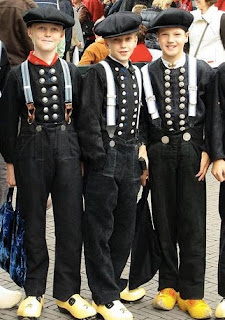With the activity of VOC in Asia, they were importing to the Netherlands goods such as fabrics, printed cotton and luxurious silks. These items were well received with some patterns copied or their designs adapted in other forms. Frequent trips to Amsterdam was made province-wide as new and unusual items arrived with the return of the trading ships.
 Chintz was originally a woodblock printed or stained calico, produced in India from 1600 to 1800 and used domestically for bed covers, quilts and draperies. The returning Dutch traders were bringing samples of this Indian Chintz to Europe and the French and English made it famous in their home decor. Chintz fabrics, with their leaf and flower motifs, can be seen in old Dutch paintings along with handwoven carpets and rugs of similar designs and were integrated into the local decor.
Chintz was originally a woodblock printed or stained calico, produced in India from 1600 to 1800 and used domestically for bed covers, quilts and draperies. The returning Dutch traders were bringing samples of this Indian Chintz to Europe and the French and English made it famous in their home decor. Chintz fabrics, with their leaf and flower motifs, can be seen in old Dutch paintings along with handwoven carpets and rugs of similar designs and were integrated into the local decor. 
They incorporated the traditional Japanese hairstyles of that time and took a liking to their pleated skirts, fabrics and clothing designs.

Along the shores of old Zuider Zee are the picturesque towns of Spakenburg and Hindenlopen, with the accessibility to Amsterdam and its fresh supplies of imported fabrics and floral prints from Japan and India. .
The Netherlands and its provinces have a colourful collection of costumes. Each so different from the other
.


From the lacemakers in France and Flanders, it founds its way into the headgear of the southern Netherlands and Volendam.
Coral necklaces from Asia, with a large clasp, became a favourite with the provinces. Silver Filigrain jewellery and buttons adorned the heavier clothing. While Hindenlopen incorporated, the hand painted Chintz designs onto their furniture.





No comments:
Post a Comment